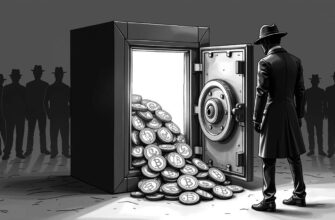If there is a currency in the world, there has to be somewhere to trade it. Picking up on this simple principle, and drawing inspiration from fiat currency exchanges, crypto pioneers have built cryptocurrency exchanges that function in the same manner as fiat currency exchanges do, just modified and optimized to trade cryptocurrency. The basic principles remain the same. I have been involved in creating many cryptocurrency exchanges, and have performed many experiments. Based on this experience, I will attempt to shine as much light as I can on the current state of crypto exchanges.
There are two types of exchanges – centralized and decentralized. This article will focus on the world of decentralized currency exchanges, or DEXs, as is evident from the title. But first, it will look at the problems with centralized exchanges and explain why decentralized crypto exchanges are needed.
The problems with centralized crypto exchanges
As the name suggests, centralized cryptocurrency exchanges are operated and monitored by a single governing body or a group of organizations. Margin trading and other features can be easily integrated into centralized cryptocurrency exchanges. They are easy to use and have been the preferred place for people to trade their cryptocurrencies. Some big centralized exchanges today include Coinbase, Kraken, Bitfinex, and Bitstamp.
So, what went so horribly wrong with centralized exchanges?
Perhaps it all started with the Bitfinex and Mt. Gox hacks which I discussed in my Decentralized Cryptocurrency Exchange Development article back in February 2018. Over 700000 BTC were stolen from these exchanges, which amounted to approximately USD 66 million at the time. The prices of BTC tumbled to as low as USD 480, people were living in fear of trading their cryptocurrencies and trust in the cryptocurrency space declined.
These incidents outline the one major problem with centralized exchanges – security. Due to their centralized nature, the vulnerability of a central network comes into play. People with malicious intent need only hack into the data centers of these organizations or exchanges since all the magic happens there. Centralized exchanges are seen as honeypots for hackers who have stolen billions of crypto in the last decade or so.
When an exchange system is breached, all the data stored at a single location can be compromised easily. This formed the basis for the Mt. Gox and Bitfinex hacks, in addition to the venerability of multi-signature accounts which were exploited.
Besides security, there are a few other notable problems with centralized exchanges. CEXs often have high trading fees and require personal information and proof of identity making it hard for users to maintain anonymity and protect their identity. Centralized exchanges also require users to trust third parties who can collude, be corrupted and manipulate prices. Furthermore, CEXs are more likely to fail accidentally because they only rely on one centralized component.
The rise of decentralized cryptocurrency exchanges
As the name suggests, a decentralized exchange is not controlled or governed by a third party or organization. These are trustless and non-custodian systems as users do not need to trust third parties with their funds or personal information. Unlike, centralized exchanges, DEXs don’t function like banks or traditional fiat currency exchanges, but instead they facilitate the direct peer-to-peer (P2P) trading of cryptocurrency where users control their own funds.
Decentralized exchanges bring major benefits. These include better privacy and anonymity, lower fees, no withdrawal/trading limits, skipping the Know Your Customer (KYC) verification process and a reduced risk of someone hacking the exchange. Decentralized exchanges also make it much harder for participants to collude and manipulate prices/trading in ways that benefit them at the expense of others.
With significant benefits in security and the fact that the exchange itself does not hold any information about customers, their funds or other personal details, DEXs have become increasingly popular. DEX protocols, such as the 0x, WavesDEX, EtherDelta and Bancor provide solid proof that DEXs if executed correctly can potentially replace centralized crypto exchanges soon. Interoperability and atomic swaps, (smart contract technology that enables the transfer of one cryptocurrency for another without using centralized intermediaries make DEXs even more viable as a business model. Here are some decentralized exchanges:
0x
The 0x or Ethereum protocol is perhaps the most popular decentralized protocol out there. Most of the world’s blockchains run on Ethereum and utilize smart contracts for their functioning. 0x eliminates the need to trust third parties with users in complete control of their information.
The 0x protocol not only acts as a decentralized exchange mechanism, but it also solves other problems with blockchains. For instance, every time a transaction is executed on the Ethereum network, a small fee, known as gas, is levied. Reducing gas prices can be accomplished with the 0x protocol, by combining its off chain relays with on-chain settlements.
Bitshares
Bitshares is a financial smart contract platform that enables digital asset trading. Users can track the values of digital assets and trade them on the Bitshares network. The tokens can be created on native platforms using BTC, USD or other currencies, and can be carried out by individuals or companies looking to create their own decentralized exchanges. The interoperability of the Bitshares exchange protocol is what sets it apart from other systems, and makes it an ideal choice for decentralized exchange development.
Stellar
The Stellar DEX protocols take decentralization to a new level. Independent servers with fault tolerance systems participate in the network, adding security to the whole network. The Stellar DEX essentially acts as a database for storing data of each and every account on the network, with a complete copy being hosted on each and every node. To aid ease of conversion between currencies, Stellar has its own currency, Lumens. It acts as a bridge between other currencies to aid in the conversion process.
The future of decentralized exchanges
It’s important to remember that we’re only at the beginning. There is still a hint of skepticism in the air regarding decentralized exchanges. Before decentralized exchanges can reach the popularity that centralized exchanges enjoy, they will need to become more user-friendly, interoperable between different blockchain architectures and increase their levels of liquidity.
The good news is that DEXs have already improved crypto trading. There are already several market-ready solutions being used in the real world delivering users a number of improvements.
And things will get even better.
Eliminating front-running and adding cross chain swaps may well be the two most worked-upon features added to DEXs in the near future. Rolling out faster DEXs could be another possibility, with the Plasma protocol already being touted as a market-ready solution.
Utilizing the different features of all protocols would be a dream solution. Combining the off chain relays of the 0x protocol, the independent fault-tolerant servers of Stellar, and digital asset trading and value tracking of Bitshares could perhaps create the ultimate exchange.
Abhishek Kumar is involved in building robust and scalable Digital Asset Exchanges and tech products for the future at Sodiotech. Check out his profiles: Twitter | LinkedIn







